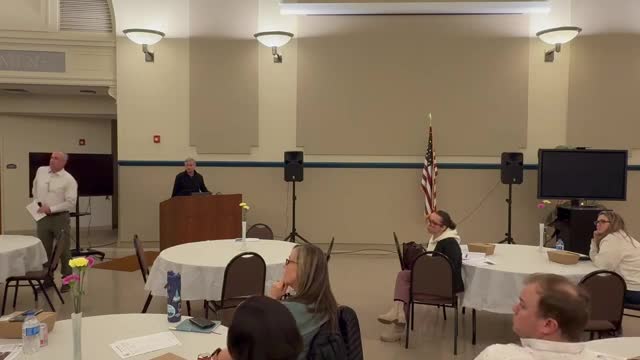Local Agency highlights transportation challenges affecting employment in Elyria and Avon
May 24, 2025 | Lorain County, Ohio
This article was created by AI summarizing key points discussed. AI makes mistakes, so for full details and context, please refer to the video of the full meeting. Please report any errors so we can fix them. Report an error »

The Lorain County Transit Roundtable convened on May 24, 2025, to address critical issues surrounding transportation and employment in the region. The meeting highlighted the significant role of transportation in workforce development and the ongoing challenges faced by residents in accessing jobs.
A key discussion point was the financial structure of the transit program, with a notable mention of the $2.1 million allocated to operate the service. It was revealed that this funding translates to a subsidy of approximately $40 per ride, raising questions about the sustainability and efficiency of the current model. Participants emphasized the importance of understanding these costs as they relate to the broader goal of improving transportation access.
The conversation shifted to the impact of transportation on employment opportunities. A representative from Jobs and Family Services pointed out that transportation remains the largest barrier to employment for many individuals in the area. This issue is particularly pressing as residents struggle to commute to jobs in nearby cities like Elyria and Avon, where many employment opportunities are located. The representative noted that the lack of affordable transportation options contributes to a cycle of poverty, making it difficult for individuals to secure and maintain employment.
The meeting also explored potential partnerships with local businesses to address these transportation challenges. Suggestions were made for major employers, such as Ford and Bendix, to contribute financially to the transit program. The rationale behind this proposal is that these companies would benefit from a more reliable workforce if transportation barriers were reduced.
In conclusion, the Lorain County Transit Roundtable underscored the urgent need for improved transportation solutions to support workforce development. The discussions highlighted the interconnectedness of transportation, employment, and economic growth, with a call for collaboration between government and local businesses to enhance transit services for residents. Further steps will be necessary to explore funding opportunities and develop a more sustainable transit model that meets the needs of the community.
A key discussion point was the financial structure of the transit program, with a notable mention of the $2.1 million allocated to operate the service. It was revealed that this funding translates to a subsidy of approximately $40 per ride, raising questions about the sustainability and efficiency of the current model. Participants emphasized the importance of understanding these costs as they relate to the broader goal of improving transportation access.
The conversation shifted to the impact of transportation on employment opportunities. A representative from Jobs and Family Services pointed out that transportation remains the largest barrier to employment for many individuals in the area. This issue is particularly pressing as residents struggle to commute to jobs in nearby cities like Elyria and Avon, where many employment opportunities are located. The representative noted that the lack of affordable transportation options contributes to a cycle of poverty, making it difficult for individuals to secure and maintain employment.
The meeting also explored potential partnerships with local businesses to address these transportation challenges. Suggestions were made for major employers, such as Ford and Bendix, to contribute financially to the transit program. The rationale behind this proposal is that these companies would benefit from a more reliable workforce if transportation barriers were reduced.
In conclusion, the Lorain County Transit Roundtable underscored the urgent need for improved transportation solutions to support workforce development. The discussions highlighted the interconnectedness of transportation, employment, and economic growth, with a call for collaboration between government and local businesses to enhance transit services for residents. Further steps will be necessary to explore funding opportunities and develop a more sustainable transit model that meets the needs of the community.
View full meeting
This article is based on a recent meeting—watch the full video and explore the complete transcript for deeper insights into the discussion.
View full meeting
